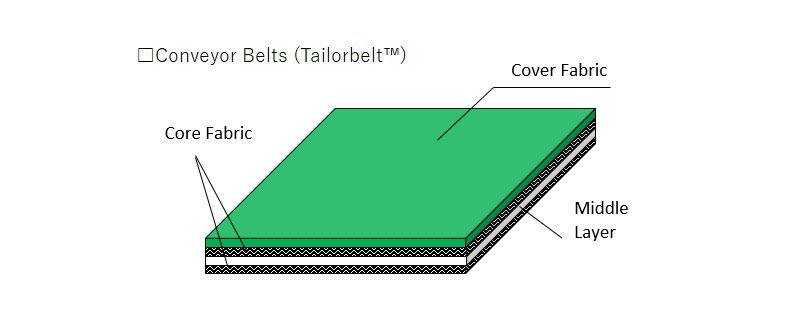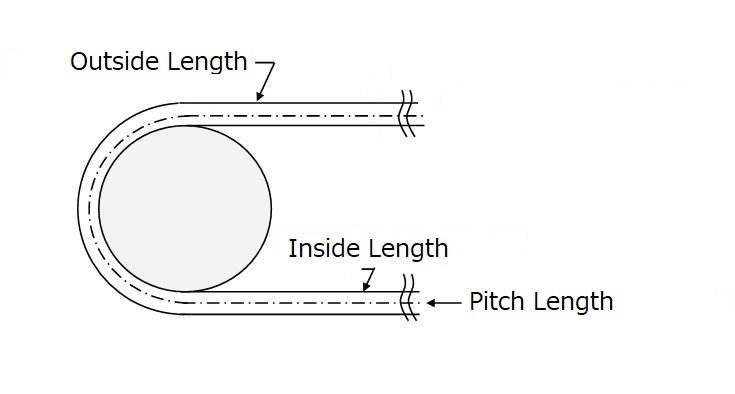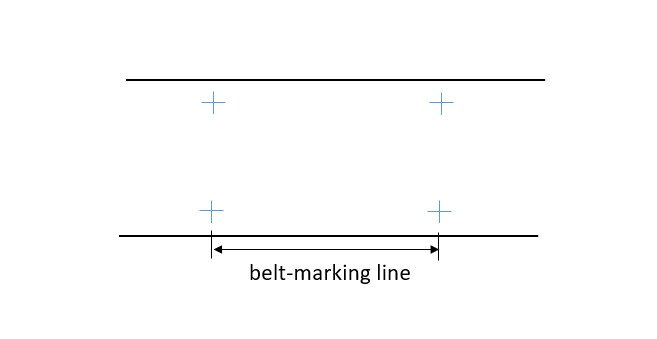FAQ
Conveyor Belts, Systems and Related Products
What is the structure of a light conveyor belt and what are the parts names?
It consists of a “core fabric” keeping tension of the belt and a “cover fabric” preventing the core fabric from being damaged by the material to be conveyed.

Which length is the base length of the conveyor belt?
If there is no special specification, we manufacture the product using the “pitch length” shown below. In the JIS standard (K6374), it refers to the length along the centerline of the belt in the direction of thickness.

When ordering, how do I indicate the length?
If there are no special specification, we will manufacture the product using the “pitch length”. In case of an order for “inside length”, it can be converted to the pitch length.
What is the installation tension of the conveyor belt?
Proper tension is required when installing belts on conveyors. Loose tension will cause the belt to slip, while strong tension will lead to premature damage to the endless section and damage to the conveyor pulley bearings.
The proper tension must be determined for each condition of use, but in practice, it is complicated and difficult to manage the tension of individual belts. Therefore, we recommend to control the initial tension by belt elongation as follows.
- Tailorbelt®-U,V,P:0.1-0.3% in belt elongation
- Tailorbelt®-F(FG type):0.05-0.1% in belt elongation
- Tailorbelt®-F(FK type):0.1-0.2% in belt elongation
How do I manage the initial tension of the belt?
Initial belt tension is controlled by belt elongation. Before installing the belt on a conveyor, place a marked line of about 1000 mm on the belt as shown in the figure below, and then tension the belt.

*Place marker lines avoiding near the belt endless section.
*If the belt width is wide, place marker lines on the both sides of the belt.
*The marked line should be measured on a flat area with no bends caused by pulleys or the like.
*Tension should be applied equally to the left and right side.